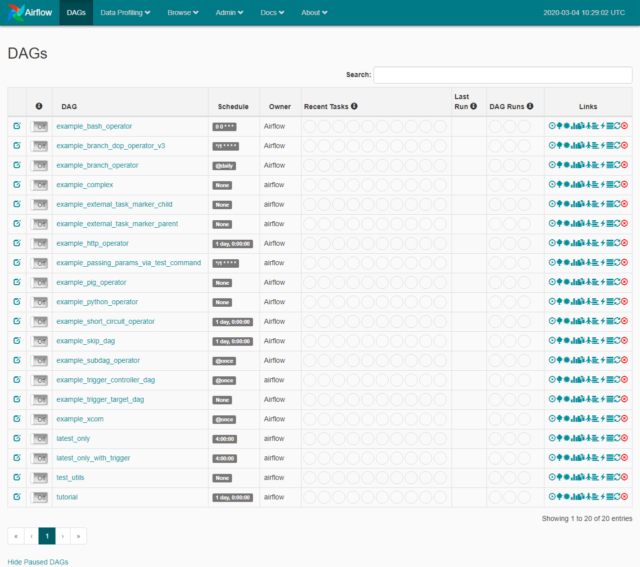

List of DAG Runs on Webserver Operators, Hooks, and SensorsĭAGs are composed of multiple tasks. DAG Runs can also be viewed on the webserver under the browse section. Whenever someone creates a DAG, a new entry is created in the dag_run table with the dag id and execution date which helps in uniquely identifying each run of the DAG. Here’s an image showing how the above example dag creates the tasks in DAG in order:ĭAGs are stored in the DAGs directory in Airflow, from this directory Airflow’s Scheduler looks for file names with dag or airflow strings and parses all the DAGs at regular intervals, and keeps updating the metadata database about the changes (if any).ĭAG run is simply metadata on each time a DAG is run. Using these operators or sensors one can define a complete DAG that will execute the tasks in the desired order. In Airflow, tasks can be Operators, Sensors, or SubDags details of which we will cover in the later section of this blog. Now a dag consists of multiple tasks that are executed in order. The above example shows how a DAG object is created. Here, we have shown only the part which defines the DAG, the rest of the objects will be covered later in this blog.
#Python operator airflow code#
Traversing the graph, starting from any task, it is not possible to reach the same task again hence, the Acyclic nature of these workflows (or DAGs).ĭAGs are defined using python code in Airflow, here’s one of the example dag from Apache Airflow’s Github repository. DAGs and DAG RunsĭAGs are a collection of tasks where all the tasks (if connected) are connected via directed lines.

If you wish to read the complete documentation of these concepts, it’s available here on the Airflow Documentation site. Here we will list some of the important concepts, provide examples, and use cases of the same.
#Python operator airflow how to#
If you haven’t already read our previous blogs and wish to know about different components of airflow or how to install and run Airflow please do.īut before writing a DAG, it is important to learn the tools and components Apache Airflow provides to easily build pipelines, schedule them, and also monitor their runs. As you may recall workflows are referred to as DAGs in Airflow. Now that you have read about how different components of Airflow work and how to run Apache Airflow locally, it’s time to start writing our first workflow or DAG (Directed Acyclic Graphs).


 0 kommentar(er)
0 kommentar(er)
